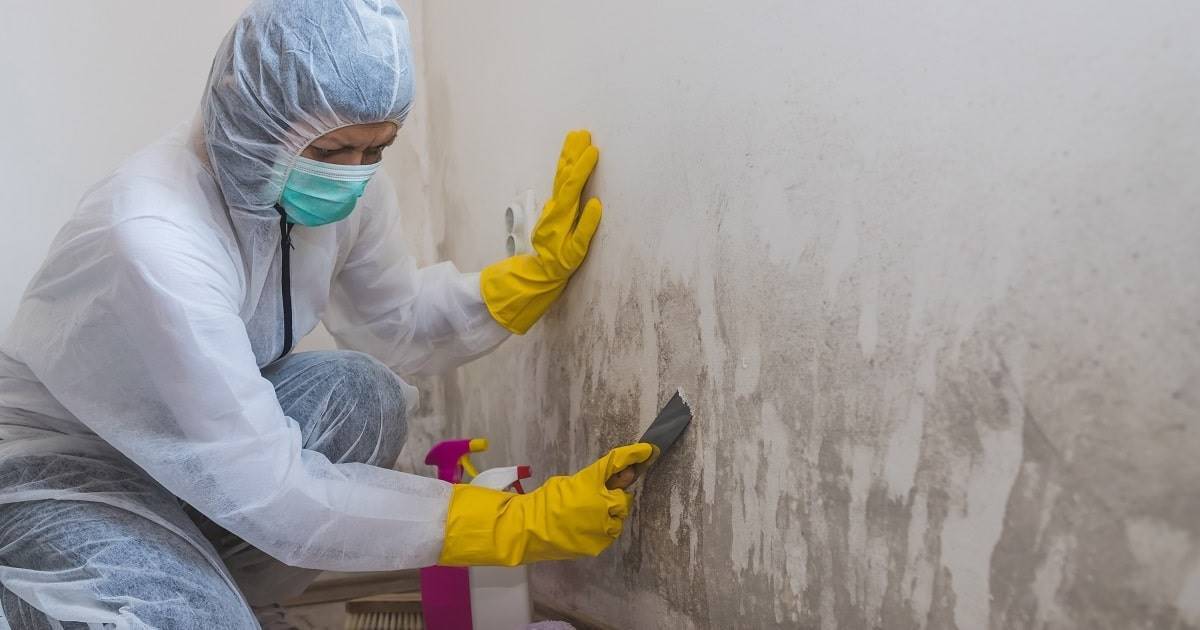Summary: The dangers of working around mold include a variety of health issues for workers. In this article, we’ll look at some of the common symptoms of mold exposure and what can be done to prevent the growth of mold in the workplace to keep employees safe. Worker Health and Safety Conditions: Mold at Work
When one thinks about a structure that’s undergone water damage from severe storms or a flood, water-logged belongings left in the storm’s wake probably are first to come to mind. However, something far more destructive can grow from the remaining moisture in the walls, flooring, ceilings, air ducts and HVAC system: mold.

Water intrusion from flooding, both internally and externally, can leave materials in the structure damp for an extended period of time. This dampness provides the moisture that can grow bacteria and microorganisms, lead to insect infestation, and grow fungi and mold. Molds and their fragments and by-products are associated with a variety of adverse health conditions. It’s imperative that any employees working in a building damaged by water, as well as the workers brought in to do cleanup, are protected from mold exposure that could severely affect their health.
Dangers of Working Around Mold

Mold can ultimately be more damaging to a building’s structure than the winds or water that came from the storm. What’s worse, the moisture left behind in walls, attics, basements or crawlspaces can quickly turn into mold that is unseen until it appears as a dark stain. When that stain develops, the wood, sheetrock, carpeting and more have already been damaged.
Mold produces seed-like spores that become airborne and can be breathed in. They also produce mycotoxins, which are chemicals attached to the spores and other parts of the mold. Mold exposure causes various health problems, including triggering allergic reactions or worsening existing conditions or illnesses. Some of the
common health issues exposure to mold can lead to include:
- Respiratory infections and symptoms in the nose, throat and lungs
- Allergic rhinitis or hay fever
- Bronchitis
- Developing or worsening of asthma
- Hypersensitivity pneumonitis
- Eczema
- Eye irritation and blurred vision
- Skin rash
Mold is known to cause
93% of chronic sinus infections in the United States. Additionally, new studies reveal that mold mycotoxins may attribute to memory loss, depression, anxiety and reproductive problems. Black mold, in particular, can have especially damaging health effects such as chronic cough, sneezing, headaches, eye irritation, fatigue and rashes.
If mold of any type is found in the workplace, employees should be removed as soon as possible to avoid the potential health risks it causes.

How to Prevent Mold in the Workplace
OSHA recommends that any excess moisture be removed from a building as quickly as possible. General mold cleanup guidelines include:
- Promptly fix any leaky roofs, windows or burst pipes
- Use a wet-dry vacuum to remove water and keep the building well-ventilated to accelerate drying time
- Utilize fans to speed up the drying process
- Keep humidity levels as low as possible and use a humidifier or air conditioner during humid months
- Throw out any materials damaged by water or mold – porous items that have been wet for more than 48 hours should be discarded
- Clean and disinfect wet surfaces with a damp cloth and detergent – use one-half cup of bleach in one gallon of water only (do not mix any products containing ammonia with bleach)
- Provide workers implementing cleanup procedures with proper PPE, including N95 masks, long gloves, non-vented goggles and protective clothing
- Monitor workers’ symptoms post-cleanup to ensure indoor air quality has been restored
Loss Control Services from AmTrust Financial
AmTrust’s Loss Control Department knows that access to the right safety resources and commercial property safeguards can help your organization take a proactive approach in reducing workplace injuries and improving employee safety. For more information about our loss control services, please contact us today.
This material is for informational purposes only and is not legal or business advice. Neither AmTrust Financial Services, Inc. nor any of its subsidiaries or affiliates represents or warrants that the information contained herein is appropriate or suitable for any specific business or legal purpose. Readers seeking resolution of specific questions should consult their business and/or legal advisors. Coverages may vary by location. Contact your local RSM for more information.